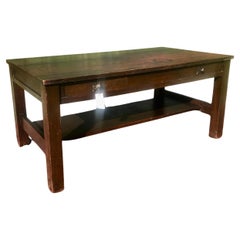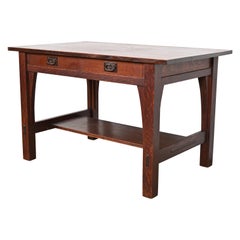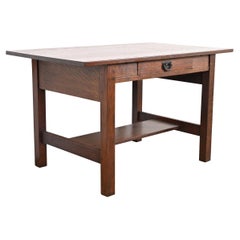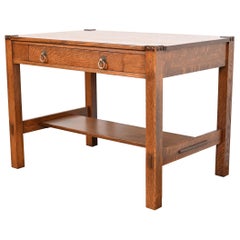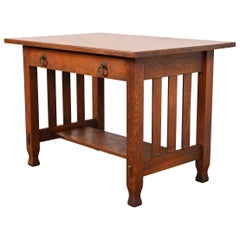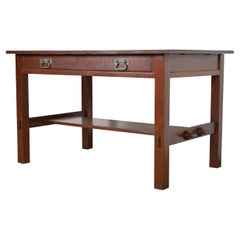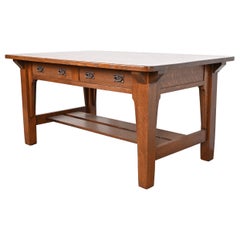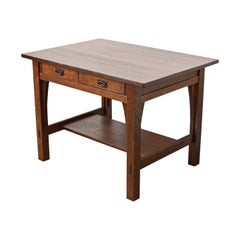Stickley Library Tables
Early 20th Century American Arts and Crafts Tables
Iron
Early 20th Century American Arts and Crafts Tables
Oak
Early 20th Century American Arts and Crafts Desks and Writing Tables
Copper
Early 20th Century American Arts and Crafts Desks and Writing Tables
Copper
Early 20th Century American Arts and Crafts Desks and Writing Tables
Copper
Early 20th Century American Arts and Crafts Desks and Writing Tables
Copper
Early 20th Century American Arts and Crafts Desks and Writing Tables
Copper
Early 20th Century American Arts and Crafts Desks and Writing Tables
Copper
Antique Early 1900s American Arts and Crafts Desks and Writing Tables
Copper
Early 20th Century American Arts and Crafts Desks and Writing Tables
Copper
Early 20th Century American Arts and Crafts Desks and Writing Tables
Copper
Early 20th Century American Arts and Crafts Desks and Writing Tables
Copper
Early 20th Century American Arts and Crafts Desks and Writing Tables
Oak
Early 20th Century American Arts and Crafts Desks and Writing Tables
Oak
Early 20th Century American Arts and Crafts Desks and Writing Tables
Copper
Early 20th Century American Arts and Crafts Desks and Writing Tables
Oak
Antique Early 1900s American Arts and Crafts Desks and Writing Tables
Oak
Early 20th Century American Arts and Crafts Desks and Writing Tables
Oak
Early 20th Century American Arts and Crafts Desks and Writing Tables
Copper
Early 20th Century American Arts and Crafts Desks and Writing Tables
Copper
Early 20th Century American Arts and Crafts Desks and Writing Tables
Copper
20th Century American Arts and Crafts Farm Tables
Oak
Early 20th Century American Arts and Crafts Desks and Writing Tables
Oak
Early 20th Century American Arts and Crafts Desks and Writing Tables
Copper
Antique Early 1900s American Arts and Crafts Desks and Writing Tables
Copper
Antique Early 1900s American Arts and Crafts Desks and Writing Tables
Copper
Early 20th Century American Arts and Crafts Desks and Writing Tables
Copper
Early 20th Century American Arts and Crafts Desks and Writing Tables
Copper
Early 20th Century American Arts and Crafts Desks and Writing Tables
Copper
Antique Early 1900s American Mission Desks and Writing Tables
Bronze
Early 20th Century American Arts and Crafts Desks and Writing Tables
Copper
20th Century Tables
Oak
20th Century American Spanish Colonial Desks and Writing Tables
Iron, Wrought Iron
Early 20th Century American Arts and Crafts Desks and Writing Tables
Copper
Antique Early 1900s American Arts and Crafts Desks and Writing Tables
Copper
Early 20th Century American Tables
Early 20th Century American Mission Desks
Oak, Walnut, Mahogany
20th Century American Arts and Crafts Desks and Writing Tables
Brass
20th Century American Arts and Crafts Tables
Oak
Early 20th Century American Arts and Crafts Sofa Tables
Bronze
20th Century American Arts and Crafts Dining Room Tables
Oak
Early 20th Century American Arts and Crafts Desks and Writing Tables
Oak
Early 20th Century American Arts and Crafts Desks and Writing Tables
Oak
Early 20th Century American Arts and Crafts Desks and Writing Tables
Copper
Early 20th Century American Arts and Crafts Desks and Writing Tables
Copper
Early 20th Century American Arts and Crafts Desks and Writing Tables
Copper
Early 20th Century American Arts and Crafts Desks and Writing Tables
Copper
Early 20th Century American Arts and Crafts Desks and Writing Tables
Copper
Early 20th Century American Arts and Crafts Desks and Writing Tables
Copper
Early 20th Century American Arts and Crafts Desks and Writing Tables
Oak
Early 20th Century American Arts and Crafts Desks and Writing Tables
Oak
Early 20th Century American Arts and Crafts Desks and Writing Tables
Copper
Early 20th Century American Arts and Crafts Desks and Writing Tables
Copper
Early 20th Century American Arts and Crafts Desks and Writing Tables
Copper
Antique Early 1900s American Arts and Crafts Desks and Writing Tables
Copper
Early 20th Century American Arts and Crafts Desks and Writing Tables
Copper
Early 20th Century American Arts and Crafts Desks and Writing Tables
Copper
Early 2000s American Arts and Crafts Desks and Writing Tables
Cherry
Early 20th Century American Arts and Crafts Desks and Writing Tables
Copper
Early 20th Century American Arts and Crafts Desks and Writing Tables
Copper
- 1
Stickley Library Tables For Sale on 1stDibs
How Much are Stickley Library Tables?
A Close Look at Arts And Crafts Furniture
Emerging in reaction to industrialization and mass production, the Arts and Crafts movement celebrated handcrafted design as a part of daily life. The history of Arts and Crafts furniture has roots in 1860s England with an emphasis on natural motifs and simple flourishes like mosaics and carvings. This work is characterized by plain construction that showcases the hand of the artisan.
The earliest American Arts and Crafts furniture dates back to the start of the 20th century. Designers working in this style in the United States initially looked to ideas put forth by The Craftsman, a magazine published by Wisconsin native Gustav Stickley, a furniture maker and founder of the Craftsman style. Stickley’s furniture was practical and largely free of ornament. His Craftsman style drew on French Art Nouveau as well as the work he encountered on his travels in England. There, the leading designers of the Arts and Crafts movement included William Morris, who revived historical techniques such as embroidery and printed fabrics in his furnishings, and Charles Voysey, whose minimal approach was in contrast to the ornamentation favored in the Victorian era.
American Arts and Crafts work would come to involve a range of influences unified by an elevation of traditional craftsmanship. The furniture was often built from sturdy woods like oak and mahogany while featuring details such as inlaid metal, tooled leather and ceramic tiles. The style in the United States was led by Stickley, whose clean-lined chairs and benches showcased the grain of the wood, and furniture maker Charles Rohlfs, who was informed by international influences like East Asian and French Art Nouveau design.
Hubs in America included several utopian communities such as Rose Valley in Pennsylvania and the Byrdcliffe Arts and Crafts Colony in New York, where craftspeople made furniture that prioritized function over any decoration. Their work would influence designers and architects including Frank Lloyd Wright, who built some of the most elegant and iconic structures in the United States and likewise embraced a thoughtful use of materials in his furniture.
Find antique Arts and Crafts chairs, tables, cabinets and other authentic period furniture on 1stDibs.
Finding the Right Desks-writing-tables for You
Choosing the perfect writing desk or writing table is a profoundly personal journey, one that people have been embarking upon for centuries.
Queen Atossa of Persia, from her writing table circa 500 B.C., is said to have been the originator of the art of handwritten letters. Hers was reportedly the first in a long and colorful history of penned correspondence that grew in popularity alongside literacy. The demand for suitable writing desks, which would serve the composer of the letters as well as ensure the comfort of the recipient naturally followed, and the design of these necessary furnishings has evolved throughout history.
Once people began to seek freedom from the outwardly ornate styles of the walnut and rosewood writing desks and drafting tables introduced in the name of Queen Victoria and King Louis XV, radical shifts occurred, such as those that materialized during the Art Nouveau period, when designers longed to produce furniture inspired by the natural world’s beauty. A prime example is the work of the famous late-19th-century Spanish architect Antoni Gaudí — his rolltop desk featured deep side drawers and was adorned with carved motifs that paid tribute to nature. Gaudí regularly combined structural precision with decorative elements, creating beautiful pieces of furniture in wood and metal.
Soon afterward, preferences for sleek, geometric, stylized forms in furniture that saw an emphasis on natural wood grains and traditional craftsmanship took hold. Today, Art Deco desks are still favored by designers who seek to infuse interiors with an air of luxury. One of the most prominent figures of the Art Deco movement was French decorator and furniture designer Émile-Jacques Ruhlmann. With his use of neoclassical motifs as well as expensive and exotic materials such as imported dark woods and inlays of precious metals for his writing desks, Ruhlmann came to symbolize good taste and modernity.
The rise in appreciation for Scandinavian modernism continues to influence the design of contemporary writing desks. It employs the “no fuss” or “less is more” approach to creating a tasteful, sophisticated space. Sweden’s master cabinetmaker Bruno Mathsson created gallery-worthy designs that are as functional as they are beautiful. Finnish architect Alvar Aalto never viewed himself as an artist, but, like Mathsson, his furniture designs reflected a fondness for organic materials and a humanistic approach. Danish designers such as Hans Wegner introduced elegant shapes and lines to mid-century desks and writing tables, often working in oak and solid teak.
From vintage desks to contemporary styles, 1stDibs offers a broad spectrum of choices for conducting all personal and business writing and reading activities.
- Who bought Stickley furniture?1 Answer1stDibs ExpertMarch 22, 2022Alfred J. Audi and his family bought Stickley Furniture in 1974. Leopold and John George Stickley opened the company in 1900 and began producing furniture that helped define the American Arts and Crafts movement. Find a selection of Stickley furniture on 1stDibs.
- 1stDibs ExpertMarch 22, 2022Yes, you can use a library table as a desk. In fact, many people like the spacious tops found on library tables because they usually have enough room to accommodate a computer and provide additional work space. Find a range of library tables on 1stDibs.

